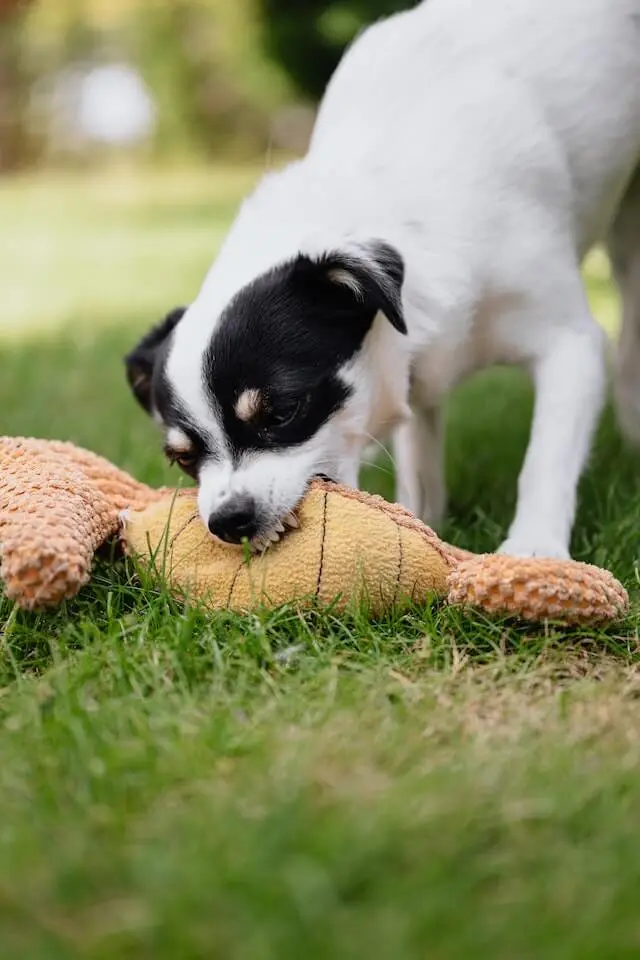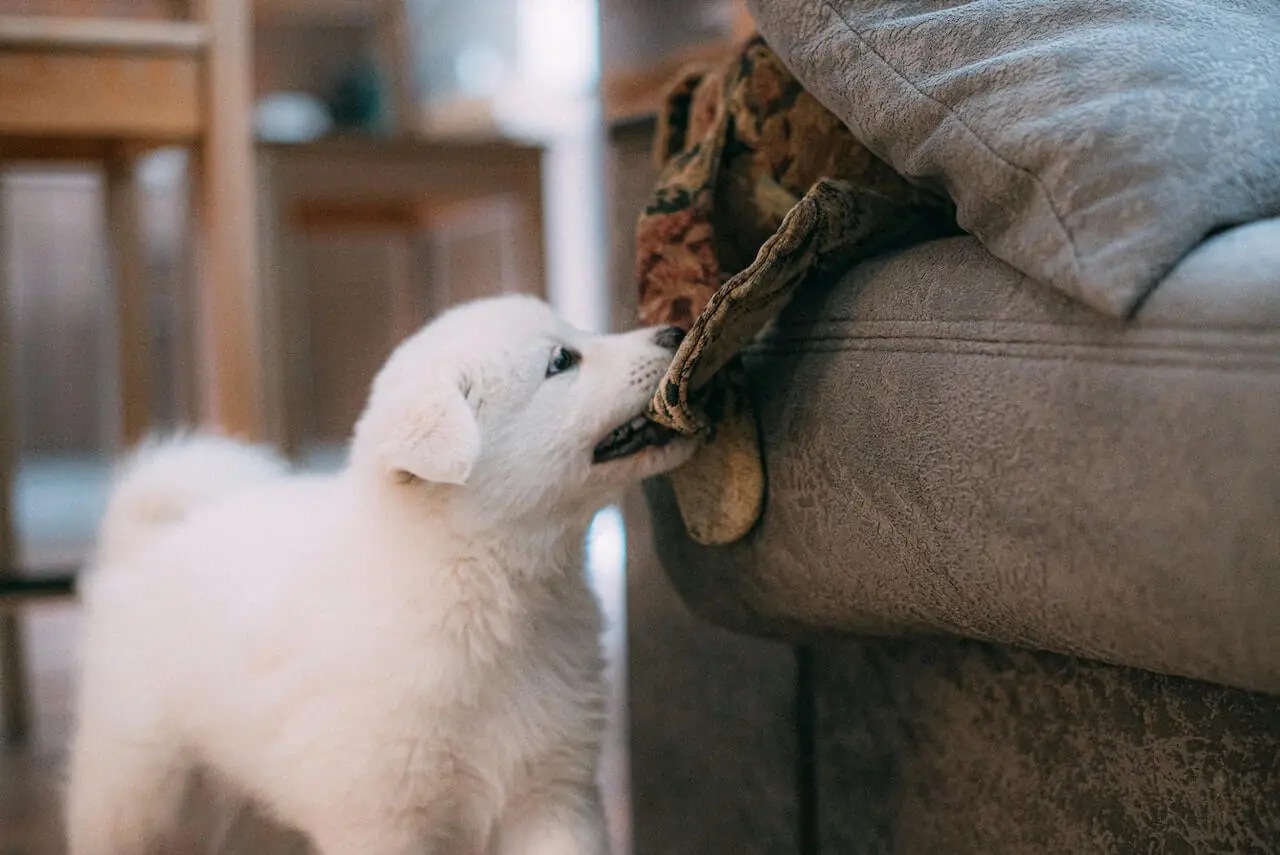Bringing a new pet into your home is an exciting and rewarding experience. As a responsible pet owner, ensuring that your furry friend stays safe and secure within the household is crucial. This article aims to provide a comprehensive guide on how to keep your new pet safe in your home.
As a vet working in a veterinary hospital, I have noticed that first-time dog owners struggle to keep their new pets safe at home and are more likely to get into accidents. So I decided to come up with an article to help new dog owners keep their dogs safe.
Tips to keep your new pet safe in your home
Keeping your new pet safe at your home consists of creating a pet-friendly environment and minimizing potential hazards. You can keep your new pet safe in your home by implementing the following points.
- Securing the living space by pet-proofing the house and blocking off dangerous areas
- Creating a safe space by removing chemicals, medicines, and other toxic substances
- Providing a safe environment for play and exercise by getting appropriate toys and removing potential choking hazards
Let’s take a detailed look at some tips and precautions that are often overlooked by new pet owners.
Block Off Holes and Small Spaces
Don’t underestimate your dog’s size and energy. Small dogs can get through a lot of small holes and crawl spaces. And once yours gets in, it will be hard to get it out. It’s best to dog-proof the areas in your home with holes and small spaces.
Start behind the washers and dryers. The heat behind these machines might entice your dog to crawl in and get warm for a little while. Also, if you can, keep doors that lead to areas that spell danger for your dog shut until you can fully puppy-proof them.
Cover or Move Wires
Aside from your shoes, dogs love to chew on loose wires lying around. So look for choking, strangulation, and electrocution hazards. Keep window treatment cords short and unplug or cover wires and electrical cords.
Those tiny teeth are sharp and can chew some of the thickest wires. Make sure the covers you buy are strong enough not to bend or break once teeth make contact. However, it is best to keep the cords out of reach.

Keep Away From Trash Can
Dogs love trash, although we can’t fathom why. But nothing good can come from your dog rummaging through the trash. Whatever it finds in there can make it extremely sick. Luckily, you can keep your pet out of the trash in a few different ways.
Use a sturdy trash can with a tight-fitting lid or lockable lid to prevent your dog from accessing the contents. A heavy-duty lid is one of the best options. Getting that lid open will be challenging, no matter how savvy and smart your dog is. Place the trash can in a location that is difficult for your dog to reach, such as on a high countertop or inside a cabinet with childproof locks.
If necessary, restrict your dog’s access to the area where the trash can is located by using baby gates or closing doors.
Secure Human Foods and Medicines
Educate yourself about foods that are harmful to pets, including chocolate, caffeine, grapes, onions, and certain nuts. Keep them out of your pet’s reach and ensure that family members and guests are aware of these restrictions.
Keep them securely stored in sealed containers. Additionally, research which plants are toxic to pets and either remove them from your home or place them out of reach.
Human medications can be dangerous or even fatal to pets. Store them in a closed medicine cabinet, and never leave pills unattended on countertops or tables.
Put Away Household Items
Many common household items, including cleaning products, detergents, and pesticides, can be toxic to pets. Store them in locked cabinets or high shelves to prevent accidental ingestion.
Not putting away lotions, cosmetics, and medications can lead to a dog eating something it shouldn’t. Also, place laundry detergents, cleaners, and other chemicals on high shelves. It’s easy to leave them out now and forget about them, but that can be unsafe for your pet.
Remember, you now have a permanent roommate, and you need to consider its stomach. As soon as you finish using one of these products, put it back in its rightful place, and if that is too low to the ground before, place it higher.
Keep Away From the Toilet
The fascination that dogs have with trash also applies to the toilet. It is important to keep your dog away from the toilet for several reasons. Firstly, drinking toilet water can expose them to harmful bacteria, cleaning chemicals, and other contaminants.
Additionally, they may try to play with or knock over toilet paper, leading to a mess and potential choking hazards. To prevent access to the toilet, close the bathroom door or use a baby gate to restrict their entry. Ensure that the lid is always closed, and consider using a toilet lock to prevent accidental openings.
Provide fresh water in a designated bowl to satisfy your dog’s hydration needs.
Wrap Up
New pet owners are likely to ignore some aspects of pet safety, which can result in problems. This article covers the basic points that every pet owner should know to keep his/her dog safe at home.
Keep your dog away from trash cans and toilets. Make sure your dog doesn’t consume human food or medications that are harmful and toxic. Restrict its access to areas of the home that have toxic plants. Keep the wires covered or out of reach for your dog.
Below are some articles that can help you take better care of your new dog best friend.
- Things to know before getting a new dog
- Newly Born Puppy Care
- How to prepare your house for a new dog
- Dog Grooming Tips for new owners
- Dog Training Tips
- Tips to strengthen your bond with your dog
Why is it important to keep my new pet safe in my home?
It is crucial to keep your new pet safe in your home to prevent accidents, injuries, and exposure to harmful substances that can jeopardize their well-being.
How can I pet-proof my living space to ensure my pet’s safety?
Pet-proofing your living space involves securing hazardous areas, removing toxic substances, and creating a designated safe space for your pet to prevent potential accidents and health risks.
What household substances should I be aware of that could be toxic to my pet?
Common household substances like cleaning products, medications, and certain foods, such as chocolate and onions, can be toxic to pets and should be stored safely out of their reach.
What precautions should I take to protect my pet from accidents, such as fires or electrical hazards?
Taking measures such as securing electrical cords, using pet-friendly fire prevention devices, and storing sharp objects safely help protect your pet from accidents and potential hazards in your home.
How can I pet-proof my outdoor area to ensure my pet’s safety?
Pet-proofing your outdoor area involves installing secure fencing or enclosures, removing toxic plants, and preventing access to pesticides or fertilizers to create a safe and secure outdoor space for your pet.
I am sure these tips will help you keep your new pet safe in your home. These can prevent accidents and potentially add years to your dog’s life. Thank you for reading!
